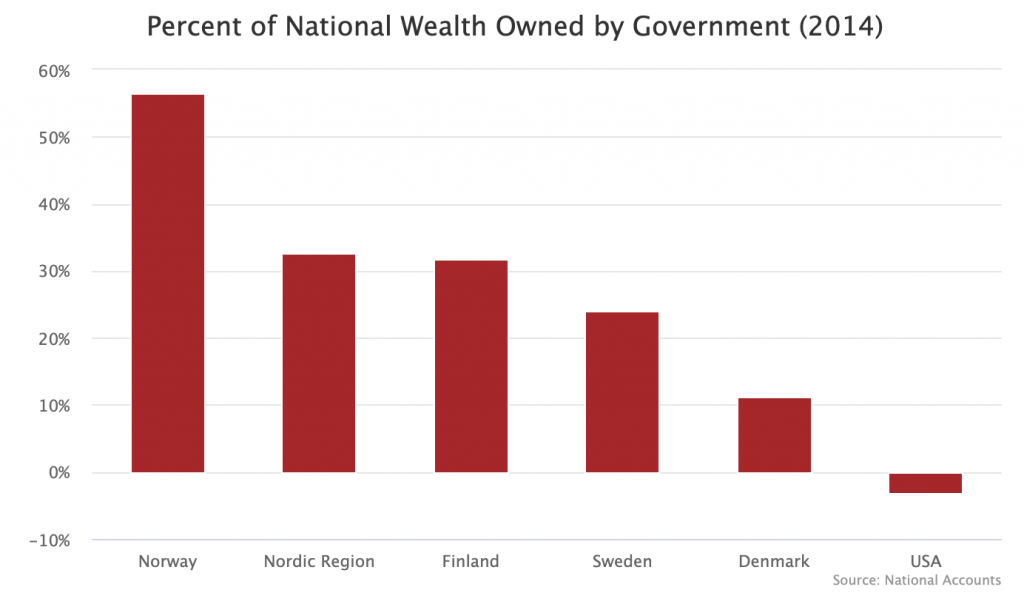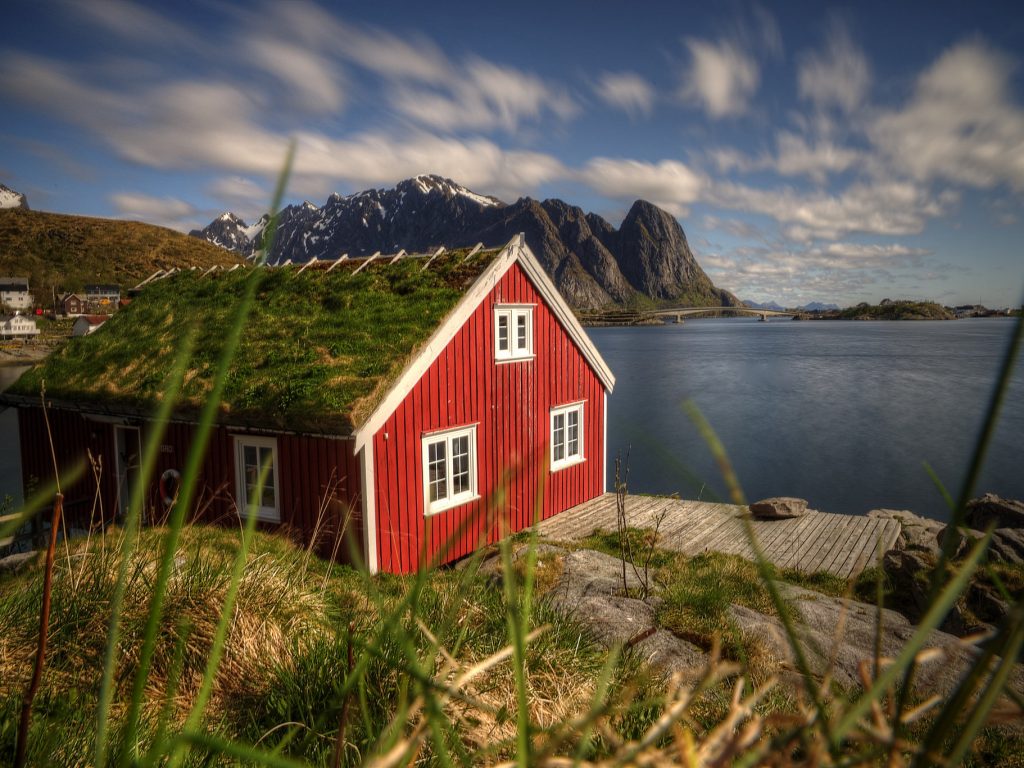On Friday, I wrote a piece noting that Giancarlo Sopo’s article in the Federalist about the Nordic countries was full of errors. Sopo tells me he has asked the Federalist to issue corrections on the errors I identified in my piece, but so far the Federalist has not done that.
If they do get into the mood to do corrections, then there are a lot more to make than the ones I identified in my initial piece. Before listing all of those errors, let’s start with some facts.
In the below graph, I have calculated how much of the national wealth each Nordic government owned in 2014. That is the last year in which all four have data. I have also produced a figure for the Nordic region as a whole (i.e. if you combine the figures of all four countries).

These figures come initially from the World Inequality Database, but were subsequently double-checked with each country’s national account or with the economist responsible for them. What they say is that in 2014, the Norwegian state owned 54.6 percent of its nation’s wealth; Finland owned 31.7 percent; Sweden owned 24.1 percent; and Denmark owned 11.2 percent. For the Nordic region as a whole, the figure is 32.6 percent. In 2014, the US government owned -3.2 percent of its nation’s wealth.
Sopo gets these facts wrong in his piece due to the same calculation error that led him to make mistakes about Mexico’s state ownership and South Korea’s state ownership, mistakes I pointed out in my first piece. So, in a sense, he made one math error — using the wrong calculation method — that then led him to publish dozens of errors.
Given the facts contained in the graph above, Sopo’s piece contains the following errors that also need to be corrected:
-
- The headline says “Debunking Socialist Myths: 90 Percent Of Scandinavia’s Wealth Is Privately Owned.” This is false. The real number is 67 percent.
-
- The sub-headline says “The Bruenig standard indicates Scandinavia is less socialist than the average non-Scandinavian country, including the United States under the most conservative presidency of our lifetime.” This is false. Sopo believes it is true because he believes Nordic governments only own 10 percent of the region’s wealth, which is less than the 12 percent of national wealth the US government owned under Reagan. But in fact, the Nordic governments own 33 percent of the region’s wealth, which is more than 12 percent.
-
- The table in his piece gets the wealth of Denmark, Finland, and the Nordic region as a whole wrong.
-
- Sopo writes “Lastly, more than 90 percent of Scandinavia’s combined wealth is privately owned.” This is false. The real number is 67 percent.
-
- Sopo writes “9.6 percent of Scandinavia’s wealth [is] under government ownership, meaning that a little over 90 percent is in private hands.” This is false. The real number is 33 percent and 67 percent.
-
- Sopo writes “Scandinavia has less state ownership of its national wealth today than the United States had under President Reagan.” This is false. See (2) above.
-
- Sopo writes “a greater share of Scandinavia’s wealth is in private hands (90.4 percent) than in the 17 other countries examined in the WIR study (86.8 percent).” This is false because only 67 percent of Nordic wealth is in private hands, which is less than 86.8 percent.
-
- Sopo writes “As such, not only does the Bruenig standard fail to prove Scandinavian socialism, it points to Scandinavia being less socialist than the average non-Scandinavian country, including the United States under what was arguably the most conservative presidency of our lifetime. Boom.” The claim about the Nordics being “less socialist than the average non-Scandinavia country” is false. It’s a repeat of the mistake in (7). The claim that they are less socialist than “the most conservative presidency of our lifetime” is false. It’s a repeat of the mistake in (2) and (6). Boom.
Also, unrelated to his statistical mess up, Sopo keeps saying that Finland is a Scandinavian country. It’s a Nordic country, but not a Scandinavian one.
I look forward to the Federalist’s corrections on these points. If they are made, the article will be basically entirely gone.

